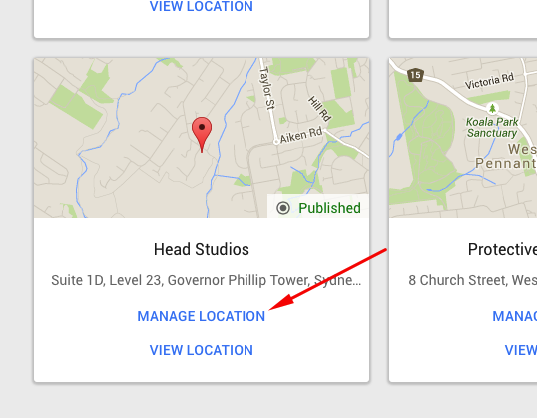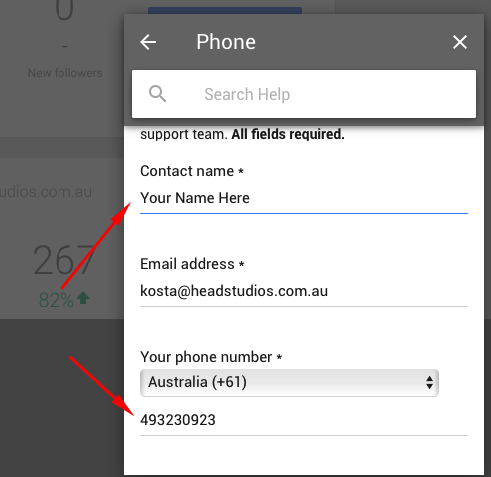Stop Competitors and Mean People Destroying Your Reputation – How I Removed My First (F*A*K*E) Negative Google Review
Recently I had setup my Google Local page and was excited – I had set the address to be in the centre of Sydney – which I believe would help my local search results.
However right after the first client had left a very positive review something happened.
Not to get into specifics but let’s say I had a spat with a certain person who I believed was upset and wanted to get me back. And this person went on Google and left a negative review for my business.
It’s interesting how vulnerable we all are as business owners – as far as our reputation goes.
Lucky for me though the negative Google review that was left was complete bulls#$t – in the sense that it was verifyable false.
Unlike other businesses that serve the public such as a coffee shop for example – all my clients are businesses and so it is much harder for someone to just come out and say I did a bad job – since they would then have to say what I did wrong and I could then place a dispute with Google that their review is bogus. Whereas if someone just says the coffee shop staff was rude you can’t really dispute that.
Anyway right after the first client had left a positive review – this 1 star review was left:
Firstly – there are a number of things with that Google review that are sketchy – and when a Google review is left for your business – when the reviewer is saying things that are verifyable true it’s a good indicator that the review was left for nefarious purposes (such as by a competitor).
To quickly break down this bogus review here are just a few inaccuracies and outright lies:
There is no public file on me at the … – their dispute handling process is done internally and any mediated decisions are not released to the public
The client cited as being ‘fake’ is actually very real – and I have evidence of the website I built for this client as well as the invoices I have sent
The account which left the negative Google review is an anomyous business account – incidentally they had another negative review left for another business leading me to think that maybe this account was just created to leave negative Google reviews (or it’s just a very terrible/negative person)
Oh and I’m not a ‘fly by night’ operation as evidenced by the Wayback Machine which will tell you my business and website have been around in various iterations for 5+ years
Anyway below I will outline what I did to have the Google review removed – I’ll also note some things I could have done to speed up the removal.
Remember your reputation is everything and one negative word could make a high profile client look the other way – so reputation management is big. Here I’m basically laying out the blueprint on how to keep yourself sqeaky clean from the ill motives of competitors.
The steps are actually really simple:
Step 1: Reply Politely and Clarify
The first thing you need to do is to make it clear to anyone reading your side of the story. In my case I realised there was no point in trying to reason with the person that left the review – since their intention was to damage my reputation.
Instead my reply – which is now gone (since Google has removed the negative review) was somewhere along the following lines:
The review left above was not left by a customer but rather a disgruntled competitor and contains verifyable untrue statements. The domain age of my website is 5+ years and I am far from a fly by night operation – the client the review is referring to exists and I would be happy to provide evidence to anyone that enquired. Further there is no public file on me at the Department of Fair Trading.
My hope in leaving this reply was that while I was waiting for Google to remove the negative review – anyone who would stumble across my business page would get both sides of the story.
As the owner of the Google Business Page you can reply to reviews.
However if the negative review was left by a genuinely disgruntled customer my advice would be to engage the customer in seeing how you can make it right – even if you feel the customer is in the wrong. It would be a lot cheaper to give the customer a discount or a partial refund in exchange for the negative review being removed rather than have the reputation of your business come down.
Step 2: Call Google (and how to call Google)
So how exactly do you contact Google and ask them to remove a Google review? There’s no ‘Contact Us’ button at the bottom of Google.com. However most businesses have no idea that they can actually call Google and talk to them about their website.
So here is a step by step tutorial on how to call Google:
- Login to your Google My Business Account (if you have a local business page then by defination you would have a Google My Business account which you can login to here: https://www.google.com.au/business/
- Select the business page which has received a negative review (if you are just running the one business just select that page) – you can see an example of me selecting my local business location below:

- Click the 3 horizontal lines in the top left hand corner of your My Business page for your local business and click ‘Contact Support’

- Scroll down in the popup window that comes up on the right and click on ‘Phone’

- Enter your ‘Contact Name’, ‘Email address’ and ‘phone number’

- Finally click on Send
- Wait for Google to call you! (usually about 5-10 seconds)
How cool is that?
And now when the person answers simply explain to them your request to remove your Google review.
Bonus Step: Follow Up with Evidence by Email
Here is what you must understand about Google’s resolution process.
Let’s say you call Google and you speak to Cindy who tells you that she will review this issue and resolve it for you.
You get off the phone (and this happened to me) – and you wait for Cindy to get back to you.
You’ll wait 3 days and hear nothing so you call back to Google to speak to Ryan – who checks the issue – puts you on hold for 15 minutes only to return to tell you that since Cindy is looking after this there is nothing you can do.
In order to make the issue go quicker make sure you have Cindy’s contact email address and follow up with evidence if the review is not true.
Note: Google My Business support don’t have direct email addresses however if you get the person you’re speaking with to send you an email you can then interact with them by replying to that email.
In my case I could have emailed them a confirmation from the Department of Fair Trading that they have no file on me for example.
The more information you can give Google – at the very least – will remind the person about the issue and will get them more reasons to remove the negative review.
Finally – The Good News
When it’s all said and done you will eventually get an email that the negative Google review has been removed. You can see what this email looks like below:
Hope that helps and good luck!


